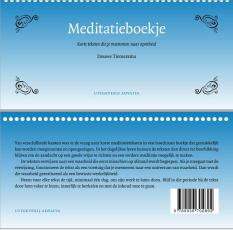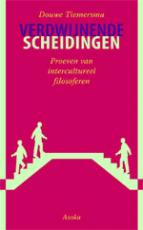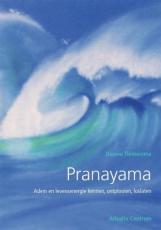Advaita Post 09 - 10 - You taste a strawberry ice cream and you're gone...

--- You taste a strawberry ice cream and you're gone, gone too is the ice cream: one taste ---

Year No. 9 10 (June 3 2008)
The non-duality of experience
A talk given in Gouda May 14, 2008
Yes, we are always talking here about the recognition of non-duality. It is clear: in practice you should recognize very clearly that non-duality is the reality which can dissolve duality and its associated suffering. You should determine this very clearly in your own experience.
In the feeling sense, it is the easiest. You can become aware of your tactile sensations. Imagine that the wind blows and you experience the wind on your skin. Which reality is that? What do you really experience now? There the feeling in which you no longer experience the skin and the wind separately. In the experience it is one phenomenon. You can go on thinking that it has two sides, your skin and the wind, but what you experience is one phenomenon. You don't experience your skin and separately the wind. They have totally merged. It is one sense-phenomenon. Just call it skin-wind. Do you experience that skin-wind feeling in space? Do you see that the physical aspect of yourself and what supposedly comes from outside totally merge? The wind, it blows. As skin wind you go completely with it into the infinite distance. You must forcibly pull the two apart from one another to experience them separately again. In the sensory experience of being there is only that one unity. That feeling skin-wind. The wind is nothing without skin, the skin is nothing without wind. It is one phenomenon.
That is also true with the sense of taste, as when you, with this beautiful weather, eat an ice cream. How is it then? "Oh, what a delicious taste - strawberries, bananas, ..." How about it then? What happens to yourself in terms of the taste experience and that which you are tasting? Isn't that also only one? I recently read a Buddhist text on the idea of 'one taste'. The interpretation was that you experience everything in the same way. There is no preference, there is no denial. What we speak about in the advaita approach is an even deeper meaning. In that one taste not only the separations that you make between the various experienced objects have disappeared, but also between yourself, your experience, and the objects. Then there is not a separate 'I taste' and 'that which I taste'. Both have merged together. There is one phenomenon of taste. Therefore, the situation in which you clearly register that one taste or that one feeling has the tendency towards universality. Why? Because there are no divisions any more. You taste something, a strawberry ice cream. As you enjoy the delicious taste, you easily merge with it. Then there is just "one taste" and that is universal. There is nothing else. You pick the ice cream up and there is still a distance, you bring it to your mouth, enjoy it and there is a merging of yourself and the ice cream. You taste a strawberry ice cream and you're gone, the ice cream too is gone: one taste. What is the reality? You can say nothing more about it, except that you and the ice cream are one. So you clearly recognize non-duality on the sensory level: that's how it is.
In hearing the separation also disappears. You hear beautiful music and you go right into it: the separation disappears. The merging 'I hear/am the music' develops itself spatially and literally creates infinite enjoyment. [There is the sound of a fire engine.] You hear the sound of the siren and you cannot say whether that is somewhere outside, or that it is present in your own sphere. There is a non-duality and it has the tendency to strengthen all by itself, because you easily become the sound of the siren.
Seeing is highly dualistic, because seeing sets something up in a fixed distance. Because we in the West are clearly very visually oriented, in our idea everything exists at a distance. The duality reigns. But there is also another kind of seeing, an sensitive kind of seeing where distance is not present. As you see from your heart, you notice that while seeing you are in the things. You see the light of the sun and you let the light come into you. Every distance is gone. Sun and self are no longer separate. From out of your heart you see that self-light everywhere. You see someone else from your heart. The distance falls away and you can immediately determine: there is no duality with the other but a non-duality. You'd have to use force in order to maintain a distance towards the other. You 'd have to make a real effort in paying attention to and maintaining the distancing: I am here and the other is there. When a little relaxation emerges, you automatically sink into it. You go back to sensitive seeing from your heart and the separation disappears. In the relaxation it disappears automatically. Seeing the sea is disappearing in it.
Keeping distance, that is tension. Look again what happens when you keep that distance. Then there is a notion of yourself, regardless of what you see, apart from the others that you see. The world, the others, are kept at a distance. What appears, what you see, is not allowed not come too close to you, not into your territory. In that sense, you create a wall. In that sense you make yourself hard. In the energy of that distance-creating-seeing is the energy that keeps the other at a distance. 'I' see 'you' there. Do you see the tension of creating distance with each objectification? That also applies to all those different future events which people tend to fear: they must remain at a distance, all those less attractive eventualities. Go now and look on the energetic level. Then you immediately realize that your seeing is the power that is keeping everything at a distance, especially the things that are not so beautiful. Relaxation means acceptance, such a complete acceptance that everything is allowed to come close, so close that it merges with yourself. This applies also to the suffering that you see. Then there is more than just pity, even more than a compassion which still knows a distance. Really, other things and other people may come so close that you merge with them. That is the point of non-duality. There is no separation anymore between your own being and the being of another, the other being
Sensitive seeing from out of your heart, the feeling experience, is a very sensitive consciousness. Therein, there are no boundaries. You can directly determine: it is universal consciousness. Therefore, there is also the immediate universal joy. Directly in the opening, is the universal Being-Consciousness-Bliss. If you don't hold back and there is a deep relaxation, then right away there is a conscious recognition of non-duality as the reality. So it is not just a feeling. And it is not merely psychological, because you can see that it concerns that one Being-Consciousness. Thus the two sides come together: the consciousness and that directness of being without distances. That is something that many people have difficulty with, because in seeing and hearing, in becoming aware, a distance is almost always created. Within that, how is the recognition of non-duality ever possible? That is very simple: there is an internal sensory consciousness, not only in the feelings, but also in seeing. In that awareness, phenomena just appear without distance. Within that they also disappear once again. They are there as physical impressions in the one body of your Self. They can come, they can also stay away. So in that internal consciousness, there is no dependence upon phenomena. If they come, there is the non-duality of the internal experience of being or of the total merging and falling away of all distances. If they don't come, then there is the pure consciousness or the dissolving of all into the Origin. Is that clear?
Er is geen tweeheid
als je ontspannen bent
in zelf-bewustzijn
is dat duidelijk.
Boeken
Douwe schreef en redigeerde gedurende zijn leven boeken. Via onze uitgeverij zijn deze nog verkrijgbaar.



